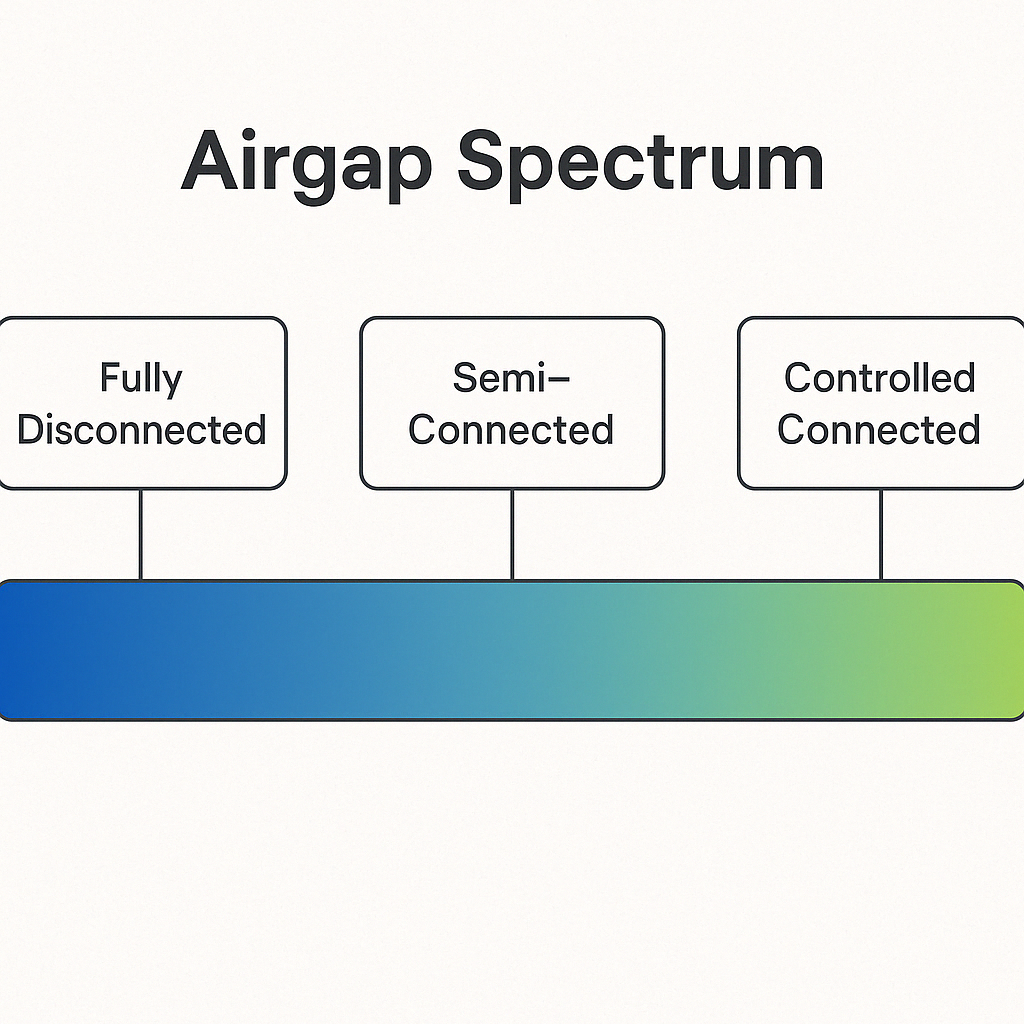
If you’ve heard the word airgap and thought “oh, that’s just for submarines,” you’re not wrong — but you’re also missing the bigger picture.
Airgaps aren’t binary. It’s not either full-internet or total-isolation. This may seem counterintuitive to some… Airgap feels pretty binary.
There’s a spectrum here — maybe not all functions or capabilities within your system are airgap-dendent. Understanding where your system lives on this spectrum is key to building something that doesn’t fall over the second a network hiccups.
What is the airgap spectrum?
Here’s how I usually explain it:
| Tier | Description |
|---|---|
| Fully Disconnected | No network access at all. No internet. No relay. Think submarines, remote outposts, satellites. |
| Semi-Connected | Some form of intermittent access—maybe via a satellite, a physical data drop, or a controlled sync window. Think forward operating bases, offline-first drones, or even industrial SCADA systems. |
| Controlled Connected | Internet access exists but is gated through policy, firewalls, or a limited egress path. Think SIPR/NIPR or compliance-heavy enclaves. |
| Online | Full internet access. Normal CI/CD pipelines, SaaS services, live GitOps syncs. |
You might move across this spectrum throughout the day.
Or design a system that can operate across the full range, depending on where it’s deployed.
Why does this matter?
Because each tier changes the assumptions you can make.
In a fully disconnected system:
- You must bundle everything ahead of time
- You can’t rely on live telemetry or alerts
- There’s no such thing as an emergency patch from the internet
In a controlled connected system:
- You might get read access to a registry—but only through a scan-and-approve process
- Your Git repo might be mirrored across a firewall once per day
- You may be able to pull metrics out—but only via manual export
You have to plan for the worst
If you build for “online” but deploy into “semi-connected,” you’re going to get burned.
But if you build for “fully disconnected,” your system will still work in every other tier.
That’s the point.
Start with no assumptions — then add capabilities where you can.
Don’t start with full SaaS and try to claw your way back to self-reliant. That way lies broken deploys and a lot of guesswork.
I’ve lived this life - as have many others. There are assumptions about design and architecture that make or break how an application handles environments which may have different requirements or capabilities.
Real-world examples
- A defense app that runs on both SIPR (controlled) and a tactical kit (fully disconnected)
- A field-deployed AI pipeline that syncs new models over a Starlink relay once a week
- A software demo that works even if the expo WiFi fails (ask me how I know)
In all of those, it’s the same stack — but built to scale across the spectrum.
Summary
The airgap spectrum isn’t about policy — it’s about operational reality.
Connectivity can vary by:
- Region
- Time
- Approval
- Mission
- Physical infrastructure
But the software still has to work.
So treat “connected” as a luxury, not a baseline.
And design like it might go away at any moment.
Because sometimes… it will.
Want to go deeper?
- Check out the Zarf project for building packages that run across the spectrum
- Join the
#zarfchannel in Kubernetes Slack - Or hit me up on socials to chat about the weirdest places you’ve deployed an app